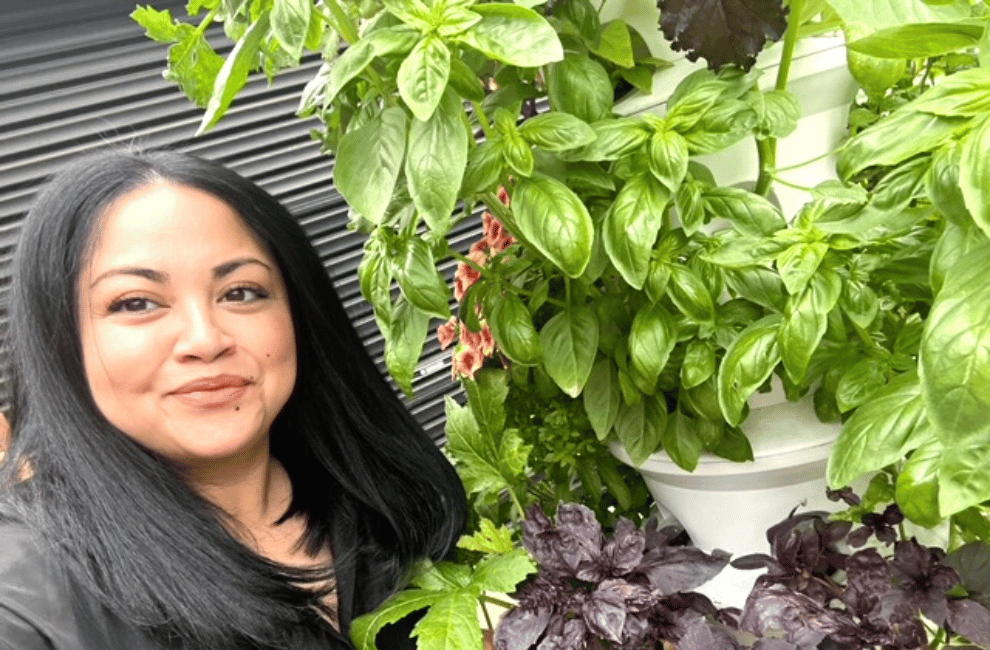
The Different Types of Hydroponics Systems and How They Work

Although the core growing principles are the same, there are six main types of hydroponic systems. In all these systems, there are a few common components required to grow – a growing medium like coco-coir, perlite or rockwool or net pots to hold plants in place, air stones and air pumps to distribute the dissolved nutrients and create oxygen, nutrients, and light.
Hydroponic systems can also be set up horizontally and vertically and often use artificial lighting to grow indoors, offering a pathway towards a more sustainable food system that prioritises the health of our food, bodies and environment.
What Are The Different Types of Hydroponic Systems?
Hydroponic systems are becoming increasingly popular for growing plants without soil. There are several types of hydroponic systems available, including Deep Water Culture (DWC), Nutrient Film Technique (NFT), Drip Irrigation, Aeroponics, Ebb and Flow, and Wick System. Each system has unique features and benefits, such as the way nutrient solution is delivered to the plant roots or the type of medium used to support the plants. However, what categorises all of these systems under the same umbrella term is that they all rely on a water-based solution to provide essential nutrients to the plants. Continue reading to learn more about the different types of hydroponic systems and how they can be used to grow healthy plants.
Aeroponic Systems
The key difference between aeroponics and hydroponics is that in an aeroponic system, plants’ roots are suspended in air, rather than growing into a medium like coco-coir or rockwool. This process starts with an enclosed cube or vertical tower growing multiple plants, with water and nutrients stored in a central reservoir, which is then pumped and distributed directly to the plants’ roots as a fine mist or droplets.
Some aeroponic systems continuously mist the plant’s roots, whereas others (such as the Airgarden) spray the roots in intervals.
There are several benefits of growing with aeroponics, the main one being that the constant exposure to oxygen accelerates growth, allowing plants to grow 3X faster than in soil (compared to 2X faster with other hydroponic methods). Aeroponics is also the most water efficient type of hydroponics, making it one of the most sustainable ways of growing plants.
As aeroponics requires more sophisticated technology and equipment, one disadvantage can be the higher setup cost. However given the faster growth and higher yields, aeroponics typically has a higher ROI in the long run.
Deep Water Culture Systems (DWC)
In a DWC hydroponic system, plants are grown in net pots suspended in the air above a reservoir, with their roots dangling into the nutrient solution below. The water is then oxygenated using an air pump, which helps to provide the plants with the oxygen they need to grow.
One of the main benefits of deep water culture systems is that they are relatively easy to set up and maintain. They do not require soil, which means that they can be set up anywhere. Additionally, because the plants are suspended in the air, they are less prone to pests and diseases.
A disadvantage of a DWC system is that since roots are suspended in water at all times, constant and consistent water oxygenation is vital to the plant’s survival – if there is not enough oxygen the plant will drown. It’s also important to maintain a consistent temperature in the water reservoir, which can be difficult to regulate in a DWC system.
Deep water culture systems are often used to grow leafy greens, herbs, and lettuces, but are not ideal for large, slow-growing plants, or anything that flowers. You can grow some plants like tomatoes and capsicums with some additional support to prevent them from falling over.
Nutrient Film Technique System (NFT)
The Nutrient Film Technique (NFT) involves continuously flowing a thin film of nutrient-rich water over the roots of plants. In an NFT system, plants are typically grown in sloping troughs or channels, with their roots suspended in the air with plenty of access to oxygen. A pump is used to circulate the nutrient solution, which flows over the roots of the plants in a thin film or stream.
NFT systems are popular with commercial growers, as they can support several plants and have a modular design which allows them to be easily produced at scale. NFT systems are best suited for lightweight plants, like herbs, lettuces and leafy greens, as well as fruits like strawberries. Heavier fruiting plants like tomatoes and cucumbers will require additional support to prevent them falling over.
Overall, NFT systems are a popular choice for home gardeners and commercial growers, however they do require careful management and monitoring to ensure that the plants receive the right amount of nutrients and water. If the nutrient solution is not properly balanced or if the flow of the solution is disrupted, the plants may not thrive.
Wicking System
A wicking system uses a wick to transport water and nutrients from a reservoir to the roots of plants. In a wicking system, a wick, which can be made from a variety of materials such as cotton, synthetic fibers, or natural fibers, is placed in the soil or growing media around the plant. The other end of the wick is placed in a reservoir of nutrient-rich water. As the soil or growing media around the plant dries out, the wick absorbs water and nutrients from the reservoir and transports them to the roots of the plant.
One of the main benefits of wicking systems is that they are relatively simple and inexpensive to set up and maintain. They do not require electricity or a pump to circulate the water, which means that they can be set up anywhere and are not dependent on access to electricity.
Wick systems however are quite slow compared to other hydroponic systems, which does limit what you can grow. Wick systems work well for growing smaller plants like herbs, leafy greens and lettuces that don’t require a lot of water. Whereas fruiting plants like tomatoes, cucumbers and zucchinis will typically not thrive in a wick system due to their high water and nutrient consumption. Root vegetables like carrots and potatoes can also not be grown in a wick system, due to the moist environment.
Drip System
A hydroponic drip system involves delivering water and nutrients to the roots of plants using a system of tubes and emitters. In a drip system, a pump is used to circulate the nutrient-rich water from a reservoir to the plants through a series of tubes. The water is then delivered to the plants through emitters, which are small devices that release a controlled amount of water onto the soil or growing media around the plants.
Drip systems can be an efficient and effective way to grow plants because they allow the grower to precisely control the nutrients and pH of the nutrient solution, as well as the temperature and humidity of the growing environment. They can also be a water-efficient method of growing plants, as the nutrient solution can be recycled and reused.
Drip systems are popular amongst commercial growers as they are easy to scale, and can also support larger plants than most other hydroponic systems, such as pumpkins, melons, and zucchinis.
However, for home growers, drip systems can be very complex and require a significant amount of maintenance, making them less appealing than other types of hydroponic systems.
Ebb & Flow System
Ebb and flow, also known as flood and drain, is a type of hydroponic system that uses a periodic flooding and draining of a nutrient solution to deliver water and nutrients to plants. In an ebb and flow system, plants are grown in containers filled with an inert growing medium, such as coconut-coir or perlite, which helps to anchor the plants but does not provide nutrients.
In an ebb and flow system, a nutrient solution is periodically flooded into the containers and allowed to drain out again. This is typically done using a timer and a pump, which controls the flow of the nutrient solution. The plants absorb the nutrients through their roots, which are suspended in the growing medium. The nutrient solution is typically drained back into a reservoir and can be reused.
Ebb and flow systems are one of the most popular hydroponic growing methods, as plants are provided with an abundance of oxygen and nutrition which encourages fast and luscious growth. However, ebb and flow systems can be expensive to set up and maintain and require more specialised equipment and expertise.







